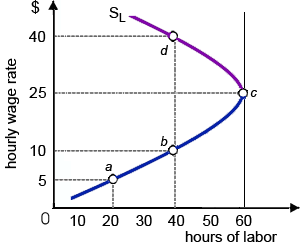This supply of labor worker is roughly unitarily wage elastic as the wage rate increases from: (1) $5 per hour to $10 per hour. (2) $5 per hour to $25 per hour. (3) $10 per hour to $25 per hour. (4) $10 per hour to $40 per hour. (5) $25.01 per hour to $40 per hour.

Can anybody suggest me the proper explanation for given problem regarding Economics generally?